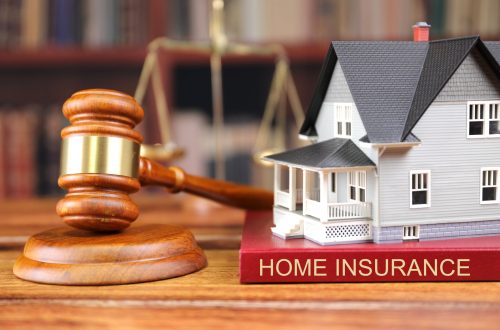It takes a lot of patience, quick reflexes and some knowledge to drive in the snow or ice.
You and your car should be prepared for driving in winter conditions. You should also try to plan your journey so you can follow the snowplows, ice/sand vehicles and other road workers rather than taking the lead.
After an Auto Accident, What Should You Do?
Make sure that you are safe first. After that, here are some things you can do (you might want to keep a printed copy in your car’s glove box just in case).
- Take note of injuries (and their severity) and yourself.
- Follow the instructions of 911 when you call.
- Follow all signs posted (for instance, if there are any nearby accident investigation sites, you can ask the 911 operator if it is safe to go).
- When you leave your car, be aware of traffic coming from the opposite direction
- Place safety cones and flares around the accident scene (if you feel it’s safe). It’s especially crucial at night, or in low-light conditions.
- Consider adding safety cones and flares to the emergency kit in your vehicle if you do not already have them.
- Photograph the area of the accident (including any vehicles involved).
- Photograph the damages to your vehicle and other vehicles involved. Include the license plate numbers (if you have the option in your settings for your phone, turn on the time/date stamp).
- You should not accept responsibility (even though you may think that it was your fault).
- Note the case number and file a report with your local police department.
- Do not stray from the truth when you are speaking to police officers and insurance agents. Do not add extra details or opinions.
- If you’re in an accident out of state, your insurance may be affected (for example, if the other party is at fault).
- Consider consulting an attorney who specializes in car claims, depending on what happened.
Call in your claim once the situation is under control. This will help you establish the record date.
Prepare yourself to describe the events and take as many photos as you can to prove the event. What you’ll need to know is:
- Model and make of covered vehicles
- What was the driver?
- Location and time of accident
- Weather conditions at the time of accident: bright sun, rain, fog etc.
- What happened? The extent of damage
- Names and Insurance Information of All Drivers
- Names and contact details of all parties involved in the incident, including any witnesses
This information is useful if you own a dashcam (many cameras automatically upload the footage when they are set up).
We hope that you will never use this list, but we want to make sure it is available in the event of an emergency. Remember: we’re here for you if there are any questions, or if you need more information.
Are you using the correct tires?
Tires that are worn out can be dangerous, especially on icy roads. Winter tires are a good option if driving on ice or snow is more than just a rare event.
Edmunds states that winter tires have been designed specifically to remain pliable at low temperatures, but they need to be changed much sooner than regular tires. They lose “almost all their ability” once the tread is down to 6/32 inch.
Safety Tips
Winter driving is a tricky time of year. Here are some tips for winter driving.
- Before you start driving, take a couple of minutes to clear the ice off your vehicle. It’s not only safer, it may also be the law. Some places have laws that require you to do this.
- Allow yourself plenty of space to stop safely. Your following distance should be increased to 6 to 8 seconds. Don’t rush through yellow traffic lights.
- Low gears will help you maintain your traction on steep hills.
- Use cruise control or overdrive on slippery roads.
- Passing snowplows and sandtrucks is not allowed. Passing other cars on wintry highways requires extra caution.
- Make sure you have enough anti-icing liquid in your windshield washer. Check that the wipers and fluid jets on your windshield are not frozen.
- Defog your inside windows with your air conditioner. Choose fresh air over recirculated.
- To increase visibility, you should drive even in daylight. Don’t forget to clean your taillight and headlights.
- Avoid skidding by braking carefully. You should gently release the brakes if you start to feel your wheels locking up.
- Black ice is a slippery, thin coating that, depending on how the sun shines, can appear to be merely wet, or completely dry.
- Keep to your lane when the visibility is low.
- Avoid bridges, ramps and overpasses. Also, avoid shady areas, unfrequented roads, and shady places. These are the first to freeze (refer back to our black ice alert above).
- Turn your steering wheel in the direction of where you see your rear wheels sliding if you start to slip. Turn your steering wheel right if your car’s rear end is sliding right. Don’t overcompensate or attempt sudden swerves.
- In the winter, keep your tank full to avoid water condensing and sinking into the fuel line and pump. It can prevent fuel from reaching the engine.
- Don’t get overconfident. Accidents can still occur even if your car has 4-wheel-drive and snow tires and you are driving a lot under poor weather conditions. Winter drivers should always be alert.
Protect yourself and your car with the correct insurance
Know what you can do to arrive safely at your destination in bad weather before you leave. Make sure that your car insurance policy is current. Speak to your agent to discuss your coverage, and any changes that may be needed to protect you vehicle (and your wallet) against winter hazards.





